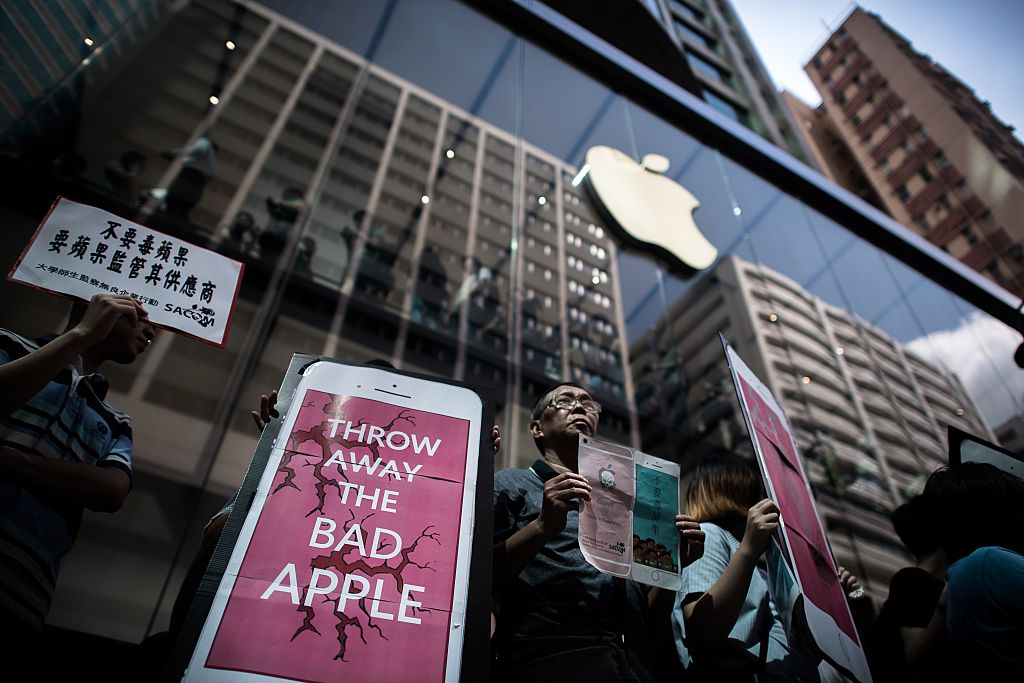Most of today’s political debates are at heart about globalization. Terrorists, tree huggers, and Trumpists have their cultural complaints, but the great wave of Western populism is fueled by economic anger. Owing to the large amount of money that has been printed, financial asset prices have risen. But median incomes have stagnated.
There is much truth in the claim that metropolitan elites have prospered, while the unvisited hinterlands have lost out, and much danger in the myth that all stakeholders benefit equally. Has globalization failed?
On its economic merits, globalization can stand tall — not through increasing everyone’s income, though it has done this in many emerging economies, but by reducing everyone’s costs. If globalization is rolled back, as now looks likely, inflation will return. The 1970s was the last time that Western inflation ran hot. Globalization killed that inflation. To imagine what reversing globalization may look like now, recall what happened in the 40 years since.
In 1980, US inflation touched 15 percent, closely pursued by interest rates. In the real world, a massive shift in manufacturing assets took place. As Deng Xiaoping opened China’s underutilized workforce, Reagan and Thatcher allowed manufacturing to flow east, letting supply side economics reduce high living costs. This was the globalization of productive assets.
In the late Eighties, financial capital began to be liberated as regulatory and technological reforms like the UK’s Big Bang reduced transaction costs. With the fall of the Berlin Wall and the communist blocs, populations began to move more freely, accelerating geographic globalization and migration. And then the internet boom of the late 1990s freed information from its silos.
As a result, abundance has increased, and clothes, toys, computers, investments, cleaners, communication, and information have consistently become cheaper. Gap sold its first pair of jeans in 1978 for $26. They still cost $26 now. This fall in the cost of living and this rise in global savings meant interest rates could drop to the lowest level in recorded history.
Yet the fall in the cost of money has been more dangerous than the fall in the cost of goods and services. Before 2008, low rates led to excessive risk taking in the banking system, which eventually resulted in quantitative easing and worsening inequality. Debt-funded corporate and social models are not sustainable but, the longer rates fall, the more they are perceived to be so.
These models include ‘zombie’ corporates (12 percent of OECD companies are unable to service their debt, up from 2 percent in the 90s); China’s domestic growth model (state-funded infrastructure with a few ‘private sector’ CCTV cameras stuck on the side); and the West’s unfunded social liabilities. These zombie corporations and China’s prioritization of employment over profit have had the further effect of increasing industrial overcapacity and reducing costs to the consumer.
All this is about to change.
The first increase in costs is in manufacturing. Trump’s tariffs and the trade war get the headlines, but wage inflation has long been building in China. Many Chinese ‘companies’ are hitting the limit to the amount of debt they can sustain. North Asia seems to have hit maximum mercantilism, the policy by which state support of export industries aims to grab market share from other nations and maintain current account surpluses.
This is why much industrial capacity never returned to the US or Europe. Combined with automation, this process makes the grievances of Trump-voting blue collar workers understandable. The global market economy has long had non-market actors in it. The irony is that Asian mercantilism may be ending just as US protectionism begins. The effect of both will be higher costs. China slipped into deficit in the first quarter, and companies are being forced to raise prices for the first time in decades.
On top of this, China’s environmental pollution has become unsustainable. Chinese environmental reforms have led to many factories having their electricity turned off if they don’t comply. Smaller companies with razor-thin margins are now required to pay higher social taxes whilst dealing with an artificially strong currency.
Higher borrowing costs mean less capacity and higher costs in general. Even if this capacity moves to southeast Asia or back westwards, few companies will manage to take on higher environmental and labor costs without needing to raise prices. Western companies, customers, and shareholders have demanded better practices in the supply chain. If we care about these issues we have to pay for them.
Other costs look set to rise as well. Prioritising domestic employment opportunities is understandable, but anti-immigration legislation and less porous borders will increase the cost of labor. Information may want to be free but we’ve just realised it’s us who are giving it away, and for nothing. We may expect more from Facebook and Google than a barter agreement. And while markets have been myopically focused on intangible assets like internet companies and brands, real world infrastructure has been neglected, and stands in need of large and costly repair.
Technology is a great deflator of costs, endlessly solving the problems caused by our previous solution. But technology is not magic. It is technique and process, to some extent inextricable from the large-scale supply chains that define globalisation. There might be revolutions in driving and manufacturing around the corner, but their costs may be higher if global supply chains are broken up. Western and Asian tech firms are already being chased out of each others’ back yards. What is economically rational may not coincide with what is politically expedient.
Last month’s historic spike in US government bond yields has been blamed on the end of quantitative easing, Chinese selling and the US deficits. But these are not prime causes. Monetary factors are important, but so is the shift in the real world’s cost base and this will rise further the faster globalization is pushed back. As interest rates rise to reflect this, there will be deflationary air pockets — a US stock market collapse, a wave of corporate bankruptcies. But the long-term trend may well be inflationary. This isn’t some abstract inconvenience. Inflation may dilute the debt of mortgage holders, corporates and governments, but it is primarily a tax on the poor. So it matters to voters, and populists too.
Mark Asquith is manager of the small and small-mid cap funds at Somerset Capital Management.


















